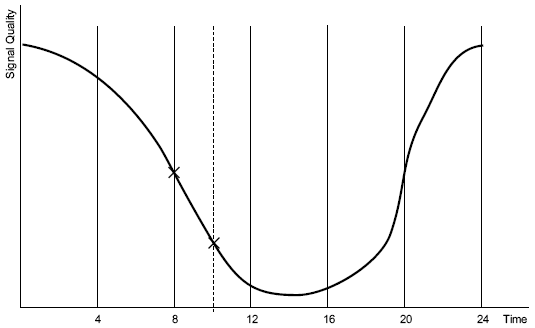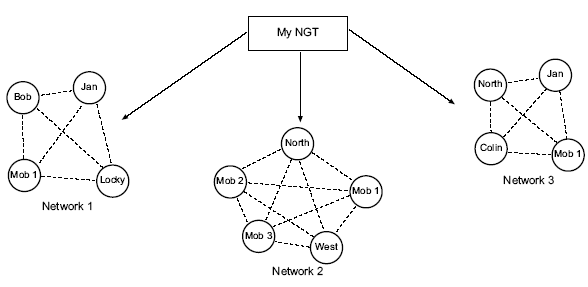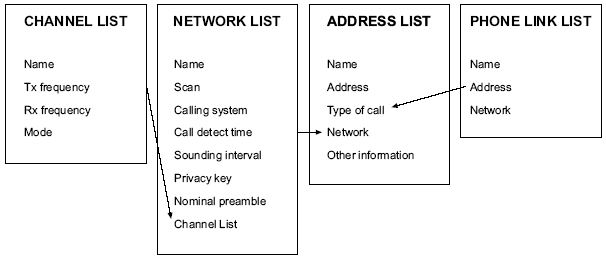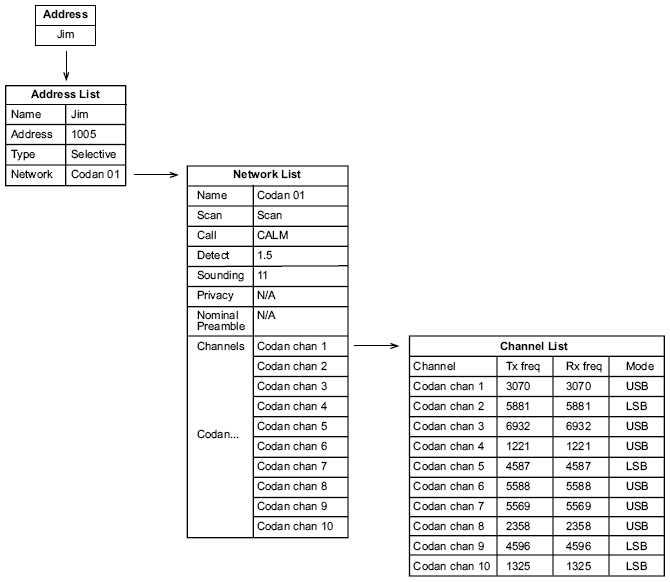HF SSB Transceivers Codan NGT Series
 HF Emetteur-récepteur Nouvelle Génération Codan NGT brochure (470 KB)
HF Emetteur-récepteur Nouvelle Génération Codan NGT brochure (470 KB)
Introduction to the CODAN NGT HF SSB Transceivers

Purpose
The purpose of this document is to highlight new features of NGT.
Introduction
HF radio has provided a reliable communications medium for many years. Recent technological advances have enabled CODAN to overcome the most common issues facing users today. The three most common issues associated with using HF radio equipment are:
- selecting the right channel to establish communications
- the effects of atmospheric noise (and the resulting effect on the quality of voice communications)
- the level of knowledge required by the operator to access the available features
NGT minimises these problems with three new concepts. These are CODAN Easitalk, CALM and an innovative user interface.
Easitalk
The atmospheric noise to which all HF radios are susceptible can make communication over an HF radio difficult. The result of this atmospheric noise is difficulty in understanding the other party. CODAN has developed ‘Easitalk’, which reduces the noise on the HF medium. Easitalk processes the received audio signal. Easitalk is a standard in-built feature that can be turned on or off at the press of a button. No other user action is required.
CALM
Knowing which is the best channel or frequency to use is difficult for many users. CODAN Automated Link Management (CALM) is a new and very advanced feature of the NGT in which the HF transceiver performs the channel selection operation automatically. With CALM, the process of making a call is as easy as pressing one button. CALM provides a dramatic improvement over conventional ALE systems.
User interface
Using the extensive feature set offered by the NGT makes operation easier than using existing transceivers. The handset in many ways looks and operates like a mobile phone.
Limitations of pre-NGT systems
Noise reduction systems
In the past, noise reduction techniques applied to HF haven’t been user-friendly or effective. While DSP (Digital Signal Processing) did reduce the level of background noise, voice clarity suffered as a result. Noise reduction units were bulky and difficult to adjust for optimal performance. None of the past noise reduction techniques were an inbuilt feature.
FED-STD-1045 ALE
Up until now, FED-STD-1045 ALE has been used to figure out the best frequency to use when sending a call. The advantages of FED-STD-1045 ALE include:
- automatic channel selection requiring no operator involvement
- voice communications as well as fax, data and email
- compatibility with different manufacturer’s ALE systems
However, FED-STD-1045 ALE systems also have a number of inherent limitations. These include:
- network time used up with sounding calls
- immediate decay of information
- not a self-managing network
These limitations are explained further below.
Network time used up with sounding calls
With FED-STD-1045 ALE, a significant portion of radio on-air time was used sending sounding calls. Regular sounding calls are broadcast by each station to provide data to other stations in the network, enabling them to assess the quality of each channel at a particular time. This information is then stored at the receiving station in a Link Quality Analysis (LQA) database.
In the following example, Mob A sends out a separate sounding call on each of its frequencies, and this information is received by Base 1 and Workshop. The tables give a visual representation of the quality of each of the channels, denoted as a percentage. With a link between Mob A and Base 1, channel 1 was the most successful and channel 3 the least. This information is held, but only until another call is made on the same frequency.
Figure 1: Stations in a network sending out sounding calls

One of the big problems with sounding calls is that they tie up network time. Selcalls or ALE calls cannot be made or received while sounding calls are being made. This reduces the network’s usable time. For example, if you have a network that contains 20 stations and 5 channels, and each sounding call takes 10 seconds, then 20X5X10/60=17 minutes of time spent on sounding. If you’re sending sounding calls every hour, this ties up over a quarter of your network time.
Immediate decay of information
Changing atmospheric conditions mean that sounding calls give accurate information at the time the call is made, but the quality of this information decreases as time passes. For example, if Workshop wanted to call Mob A two hours after receiving a sounding call, the transceiver uses information that is two hours old and therefore not accurate. As Figure 2 shows, a call made at 10 a.m. uses information received at 8 a.m. Shown graphically, it is obvious that the signal quality has disintegrated over the two hours. This shows how the FED-STD-1045 ALE systems are unable to compensate with these rapidly changing conditions.

Figure 2: Example only - a plot of signal quality between Mob A and Workshop over a 24 hour period
Not a self-managing network
Each station in a FED-STD-1045 ALE network is programmed to listen for sounding calls coming from other stations in the network on a set of appropriate channels. If another station were to be added to a network, each other station that is already in the network would have to be reprogrammed with the information of the new transceiver. The nature of the HF networks means that this task can be logistically very difficult; it may take a very long time or may not be possible at all.
Advances with NGT HF Transceivers
Easitalk
CODAN has developed an in-built noise reduction facility designed to noticeably improve communication quality under a wide variety of conditions.
If you are integrating CODAN NGTs into an existing network that contains other HF transceiver models, the NGT can still use Easitalk to its full benefit; Easitalk processes the incoming audio signal, not the outgoing.
Unlike previous noise reduction units, which required installation and expert knowledge to operate, Easitalk is an in-built transparent feature with no knobs or switches to adjust. To use Easitalk, it’s as easy as pressing an on/off button.
CALM
CALM is a new feature that combats the limitations of FED-STD-1045 ALE. CALM provides all of the benefits of FED-STD-1045 ALE plus the following advantages. CALM:
- creates multiple time-stamped entries for each channel/link in the LQA database
- reduces the number of sounding calls
- provides a self-managing network
Database of channel/link information
NGT’s self-generating link quality database is based on the fact that HF propagation conditions vary significantly during the day, but are relatively stable over a few days. Therefore, link quality data obtained at the same time yesterday has more significance than data obtained 4 or 5 hours ago. There are multiple measurements available in the CALM database and these can be used in a more intelligent way than FED-STD-1045 ALE systems.
With pre CALM systems, accurate information required more sounding calls more often, resulting in reduced network availability time. With CALM, if a station is listening, any call received using FED-STD-1045 ALE or CALM will be used by that station to update its database. The longer the network is operating and the busier the network, the higher the quality of the channel/link LQA database.
Sounding call reduction
CALM, over a period of time, develops a link quality database with channel quality measurements recorded against the times that the calls and soundings were received. Therefore, whenever you want to make a call the transceiver has multiple pieces of information in its database for selecting which channel to use.
The NGT updates its link quality database every time any type of ALE call is made. If you have the CALM option, you can make selcall, status, message, emergency, phone and GPS calls as ALE calls. In a busy network, the sounding interval can be spaced out to many hours. Set sounding calls to be sent at an interval that is a prime number (3, 5, 7, 11, 13, 17 and 23) as this will build up an LQA database of each hour’s suitability over several days of soundings.
Self-managing network
With the introduction of CALM, it is no longer necessary to reconfigure each NGT station with information about a new NGT transceiver. Once the new station goes on air with a sounding call, all CODAN NGT stations in the network automatically add it to their database. The new station also begins to build its link quality database of each NGT station in the network.
The network administrator programs the CODAN NGT at headquarters and despatches it to the new location. The administrator doesn’t have to reprogram all the stations in the network. The CODAN NGT CALM network is able to upgrade itself, which significantly reduces the network administrator’s workload.
How does NGT work?
Now that you know the most important advances behind NGT, what else do you need to consider? CODAN NGT uses exactly the same core information as previous HF systems. The information has been regrouped to produce a simple interface that removes the guess work from using HF radio.
Channels
Channel characteristics and the basic way a channel works has not changed. However, the channel/frequency is no longer the focus of radio operations. The name or address of the party you want to call is much more significant in the CODAN NGT. Channels work behind the scenes and are almost transparent with CALM.
Mobile phones work in a similar manner. Mobile phone systems use multiple channels to connect into the PTSN (Public Telephone Switching Network), but the user doesn’t get involved with the channel selection. All they need to know is how to call another person, that is, scroll through the name list and press send, or press in the number then press send. The principles are the same for CODAN NGT.
With the CODAN NGT, there is a Channel List that has one major difference from older transceivers. Previously, channels were given a channel number, but now you can also give them a name, for example CODAN Internal 3 or Regional Night Channel. You can also group channels by the clever use of words in channel names.
Table 1: Characteristics of a channel
| Characteristic | Description |
| Name | Uniquely identifies a channel |
| Tx Frequency | Transmit frequency associated with the channel |
| Rx Frequency | Receive frequency associated with the channel |
| Mode | Channel mode, e.g. upper sideband |
Table 2: Example of a Channel List
| Channel name | Тх (kHz) | Rx (kHz) | Mode |
| CODAN Test 3MHz | 3070 | 3070 | USB |
| CODAN Test 5MHz | 5880.5 | 5880.5 | USB |
| CODAN Test 9MHz | 9360 | 9360 | USB |
| CODAN Test 15/16MHz | 15815 | 16627 | USB |
| CODAN Trial 18MHz | 18696 | 18696 | LSB |
| CODAN Demo 3MHz | 3182 | 3182 | USB |
Networks
A network is a group of stations sharing channels, a calling system and other characteristics. As well as each channel being named, each network is also named, for example CODAN Net.
Different networks may use different calling systems. For example, a network of CODAN NGTs may use ALE/CALM calling, but if older model HF SSB transceivers are being used, you will probably use CODAN Selcall to call those stations. With networks, you can decide if you want to ‘scan’ or ‘don’t scan’. If ‘scan’ is chosen, then all the channels in the network will be scanned automatically. If you are receiving or making calls, they will use that network’s calling system and channels. In the NGT, the network is the gateway to communicating.
Previously, up to 10 channels could be scanned at any one time. The CODAN NGT can be programmed for 10 networks each with a different call system (e.g. selcall, CALM, etc). Channels can be repeated in each network. Each network is labelled with its own distinctive name and to each network you can attach a distinctive self-address, which is an individual name that is sent with calls made using that network.
Each mobile and fixed station in a network needs to be given a self ID. The ID acts just like a telephone number. The ID can be either numerical, alphabetical or a combination, (e.g. DIVISION2). When another station wants to communicate with you, this is the number or name they will use. There is no need to memorise any self IDs or carry lists of this information as this will be set up in your Address List by the person managing your network.
Table 3: Characteristics of a network
| Characteristics | Description |
| Name | Network name |
| Scan | Network can be ‘scan’ or ‘don’t scan’ |
| Call system | Selcall, CALM or voice |
| Call Detect Time | Set for appropriate time interval (e.g. 6 secs for selcall, 1 sec for CALM) |
| Sounding Interval | Time between sounding calls (for CALM networks only) |
| Privacy Mode/Key | Privacy mode on or off and associated key |
| Nominal Preamble | Preamble time for selcall or CALM |
| Channels | Channels associated with this network |
Table 4: Example of a Network List
| Name | CODAN Net |
| Scan | Scan |
| Calling System | CALM |
| Call Detect Time | Def |
| Sounding Interval (hours) | 5 |
| Privacy Mode | - |
| Privacy Password | - |
| Preamble | Def |
| Channels | CODAN Test 9MHz/USB CODAN Test 15/16MHz/USB CODAN Trial 18MHz/LSB |
Expanding networks
You can scan more than one network at a time. The following example illustrates.

Figure 3: CODAN: Three separate networks
Networks 1, 2 and 3 can all be scanned simultaneously (with older transceivers it was only possible to scan one at a time). A station can also be a member of more than one network. For example, a mobile station in Network 1 can also be in Networks 2 and 3.
Phone Link List
The Phone Link List stores the details of the various radio/telephone interface units of your networks. In order to make a phone call, you need to know the address of the radio/ telephone interface units. These interface units connect the radio to the PSTN for direct dialling.
The address of the base station and any other information that is necessary to make a call (networks and channels/modes), are stored in the Phone Link List.
Table 5: Characteristics of a phone link
| Characteristics | Description |
| Name | A name that easily identifies this phone link to the user |
| Address | Address of the radio/telephone interface |
| Network | Where the radio/telephone interface station is located |
| Channel | Channels of the above network (normally leave blank) |
Table 6: Example of a Phone Link List
| Address | Name | Network | Channel |
| 5001 | Direct Dial | CODAN Net | <blank> |
Address List
The Address List is a new feature that enables the user to make a call with the press of a button. For example in the Address List, scroll to ‘Jim’, then press call. It is this facility, in conjunction with CALM, that enables the end user to ignore the channel selection process.
In the past, any addresses or channels that were available for your use either had to be written down or simply remembered. The Address List can store up to 100 addresses that can be easily retrieved via the menu.
Table 7: Characteristics of an address
| Characteristics | Description |
| Name | Name of person/place to be called |
| Address | Address (call ID) of person or place |
| Call Type | Selective, Phone, Message, Get Position, Get Status, Send Position, Channel Test (if applicable) |
| Message | Message to be sent if using a Message call |
| Network | The network that will be used to make the call |
| Channel | The channel that will be used to make the call |
| Phone Link | Phone Link (if applicable) for the call |
Table 8: Example of an Address List
| Name | Call Type | Message | Address | Network | Channel | Phone |
| Bob | Selective | - | CAMP1 | Goldmines | ||
| Medic | Selective | Send emergency supplies | MEDIC | Goldmines | ||
| Office | Phone | 0883050311 | Direct Dial |
Even without the CALM option, you can still set up the NGT to make a call at the press of a button by creating entries that take into account each of your frequencies, for example Police (a.m.), Police (midday), Police (p.m.), Police (night).
Control List
The NGT also contains a Control List that stores information about the operation of the transceiver. It includes entries such as the unit’s self ID, the contrast and brightness levels of the display, pre-stored messages and a power-up password.
The Control List also contains factory-set information about the configuration of the transceiver. This included the frequency range, and output power of the PA and the details of the profile loaded at the time of manufacture.
Summary
Codan has developed a radio that makes HF communication easier than before. NGT takes the basics of HF communication and wraps them up into a simple user-friendly interface. You can even program your transceiver to automatically begin scanning when it is powered up. You can set up your transceiver to scan:
- several networks
- different calling systems
- up to 100 channels
- several self addresses
The following flow chart shows the relationships between the four lists described.

Figure 4: Flow chart of the lists
The NGT uses a hierarchy of information stored in its Address, Network and Channel Lists. Figure 5 illustrates that to make a selective CALM call to Jim, you use CODAN 01 network. This network is scanned for incoming calls. Codan chan 1 through to Codan chan 10 are all a part of the Codan 01 network. The NGT will select the best channel out of CODAN chan 1 to CODAN chan 10, then make the call.

Figure 5: Example of list entries
The user simply needs to look up Jim in the Address List and press send. The transceiver makes the call to Jim’s station using the details given in the Address List. Additionally, the transceiver uses CALM to select the best channel from those available.
CALM - CODAN Automated Link Management
We applied our detailed understanding of how HF users operate to develop CODAN Automated Link Management - a fully compatible enhancement of the industry standard FED- STD - 1045 ALE (Automatic Link Establishment) - to yield a system which delivers superior performance and eliminates the need for a network manager.
The FED-STD-1045 ALE standard is a well-established system for automating and optimising the selection of radio channels, eliminating the need for the radio user to find a good working channel. But while it is effective in many situations, it can be difficult to manage and doesn't perform well in mobile networks.
Conventional ALE system attempt to track the current state of propagation conditions by transmitting 'soundings', which are used to assess the quality of each channel at that time. This requires a high level of 'sounding' activity in order to maintain timely information.
CALM utilises a sophisticated diurnal profiling technique to develop propagation profiles for each channel. Because 'sounding' information is only required to update these profiles, full system performance can be achieved with up to 80% reduction in 'sounding' activity. Immediate system availability is critical, especially for mobile networks.
CALM's stored profiles are valid for several days, so it is able to select a suitable channel from the moment the radio is turned on.
CALM networks are self-managing. When a new user joins the network it operates on a set of default systems parameters, providing performance similar to a conventional ALE system. Then, as it accumulates information about other users, it gradually optimises its performance to match the network requirements, resulting in network performance that actually improves with age.
The CALM system is tightly integrated with other signalling systems such as selcall, and the 9001 and 9002 modems, permitting mixed selcall and ALE operation.
Channel scan rates are adjusted automatically to optimise network and linking performance while maintaining compatibility with all calling systems in use. Whenever possible, CALM will select a turbo scanning rate of 10 channels per second - twice as fast as conventional ALE systems and more than 5 times faster than previous Codan radios.
In order to support multiple services such as voice, fax and data, the Internet and email, a conventional ALE system requires 'sounding' to be performed for each service. CALM provides virtual service addressing, which allows you to allocate a virtual address to each service without increasing your 'sounding' burden.
Feature comparison between ALE and CALM
| ALE | CALM | |
| Full ALE FED-STD-1045 compatibility | + | + |
| Diurnal profiling | - | + |
| 80% sounding activity reduction | - | + |
| Immediate system availability | - | + |
| Self-managing network | - | + |
| Simultaneous selcall/ALE operation | - | + |
| Turbo scanning (10 channels per second) | - | + |
| Virtual service addressing | - | + |
